
How to Use BD140: Examples, Pinouts, and Specs
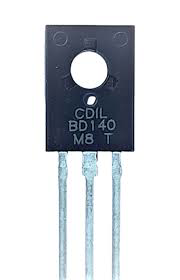
 Design with BD140 in Cirkit Designer
Design with BD140 in Cirkit DesignerIntroduction
The BD140 is a PNP bipolar junction transistor (BJT) manufactured by STMicroelectronics. It is widely used in amplification and switching applications due to its robust design and reliable performance. With a maximum collector current of 1.5A and a maximum collector-emitter voltage of 60V, the BD140 is suitable for medium-power electronic circuits. Its versatility makes it a popular choice in audio amplifiers, motor drivers, and general-purpose switching circuits.
Explore Projects Built with BD140
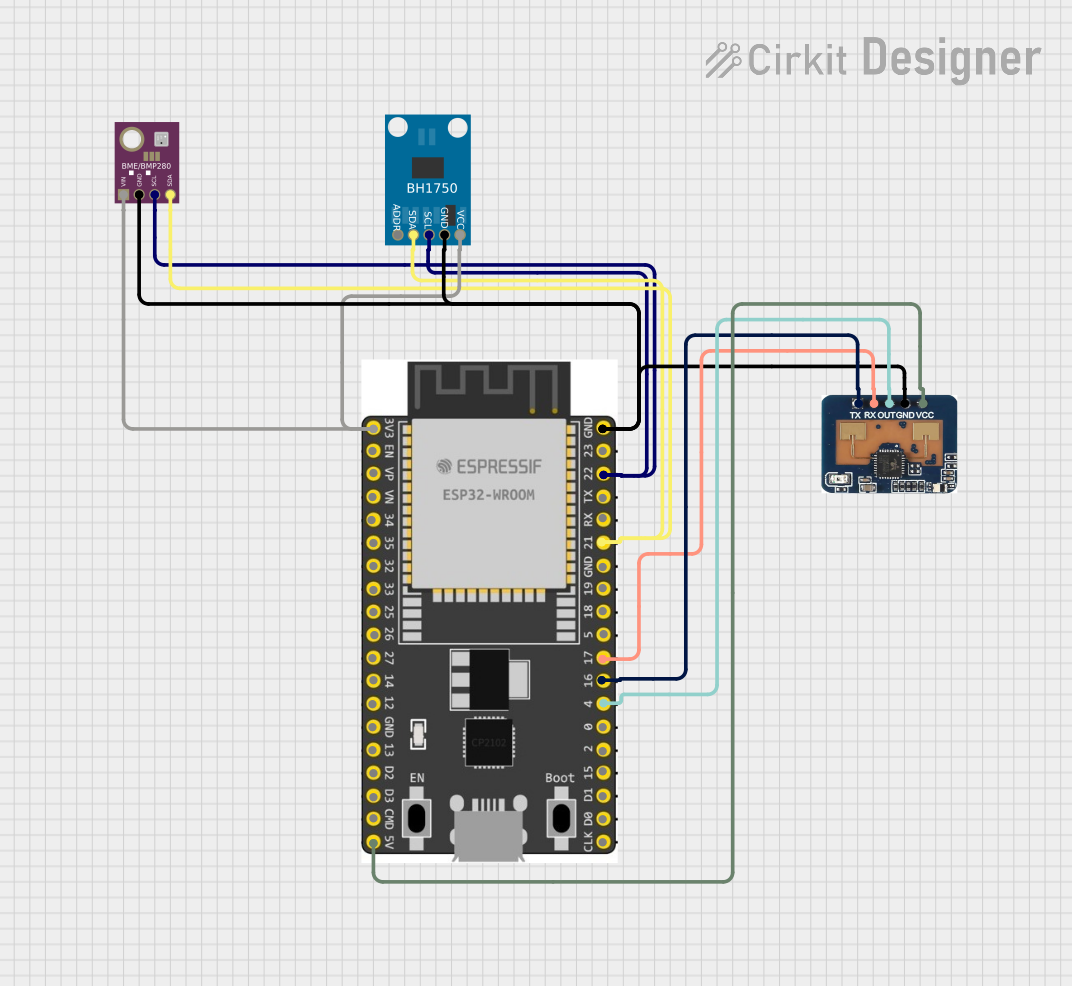
 Open Project in Cirkit Designer
Open Project in Cirkit Designer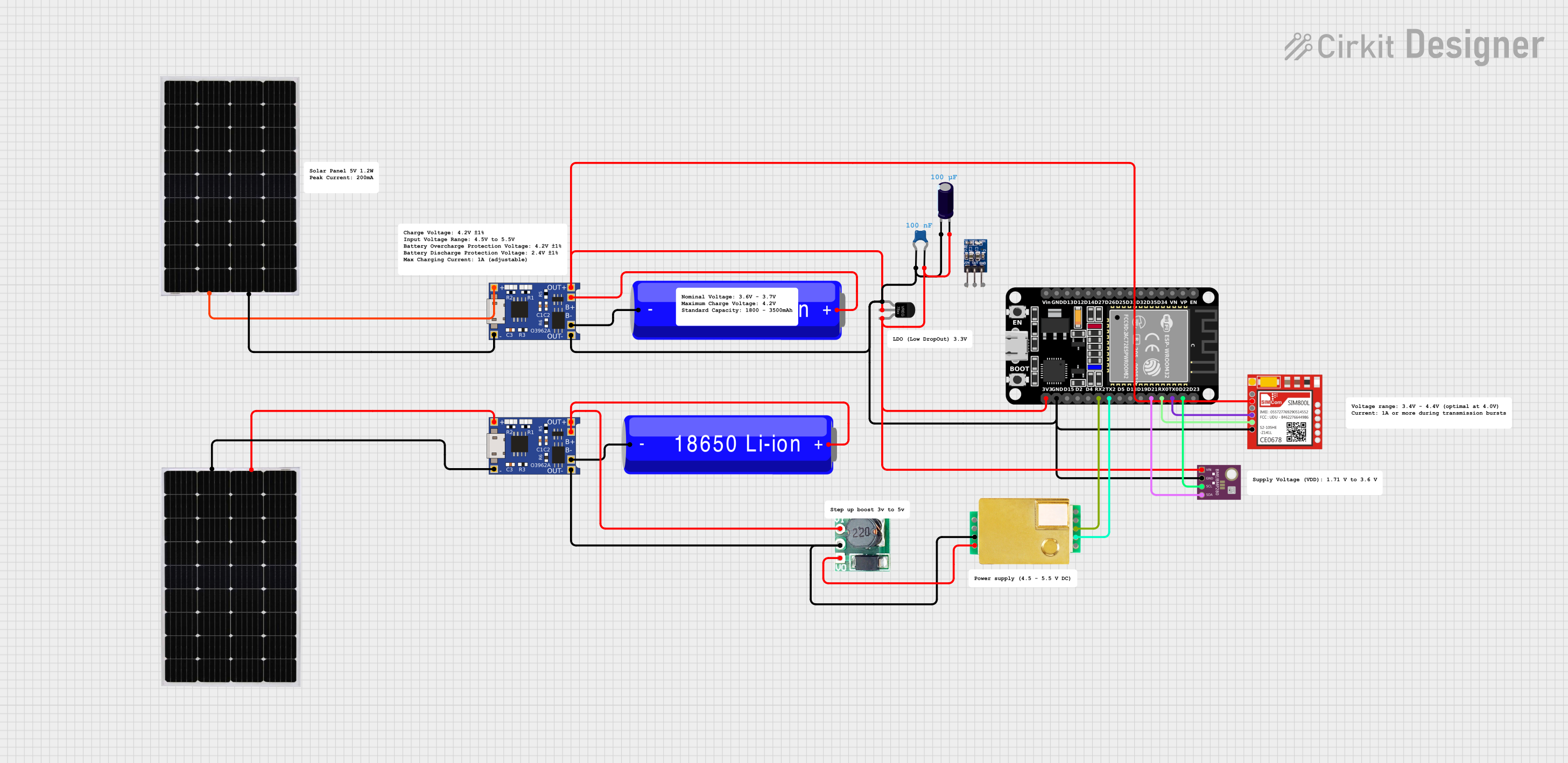
 Open Project in Cirkit Designer
Open Project in Cirkit Designer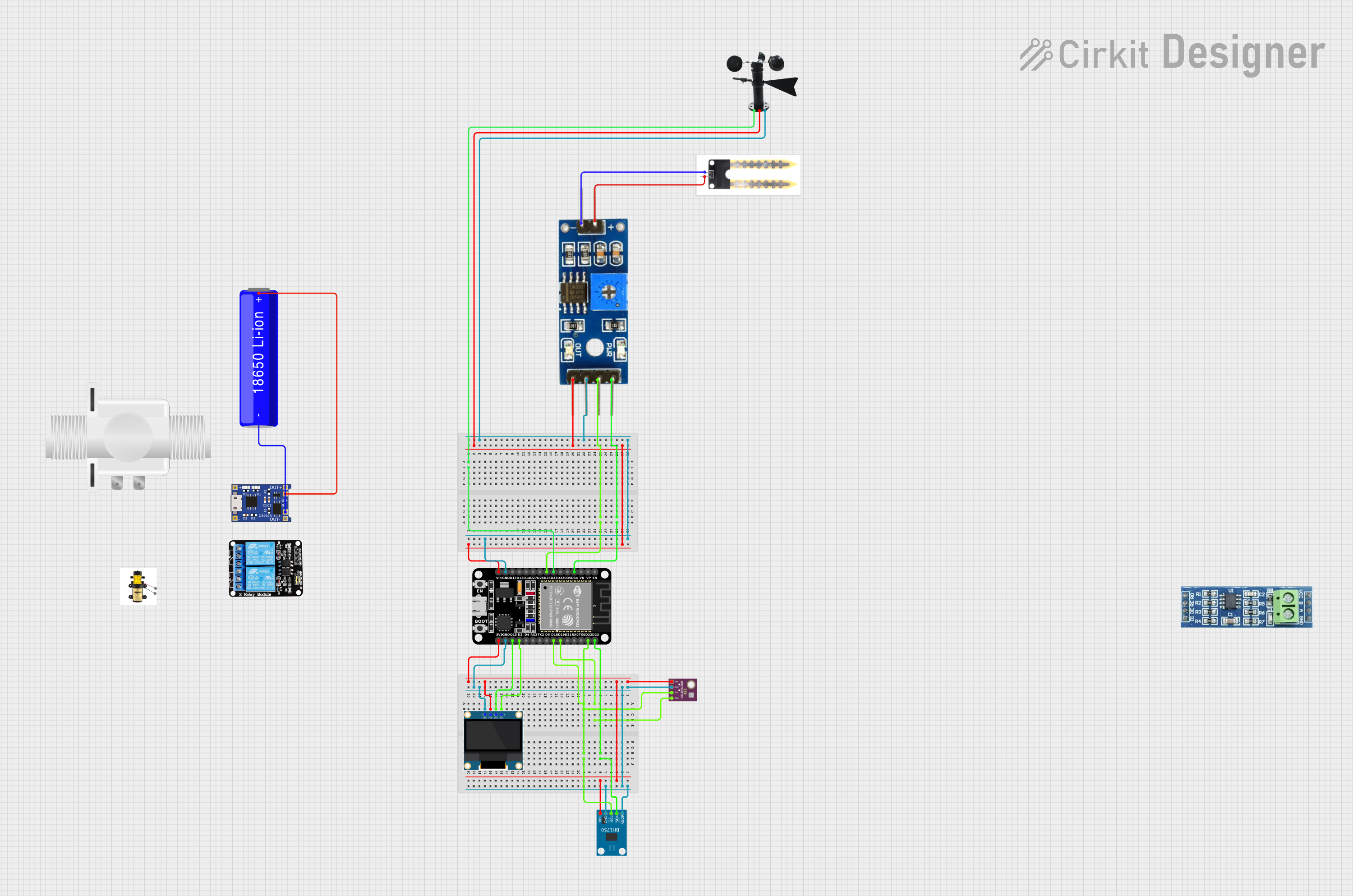
 Open Project in Cirkit Designer
Open Project in Cirkit Designer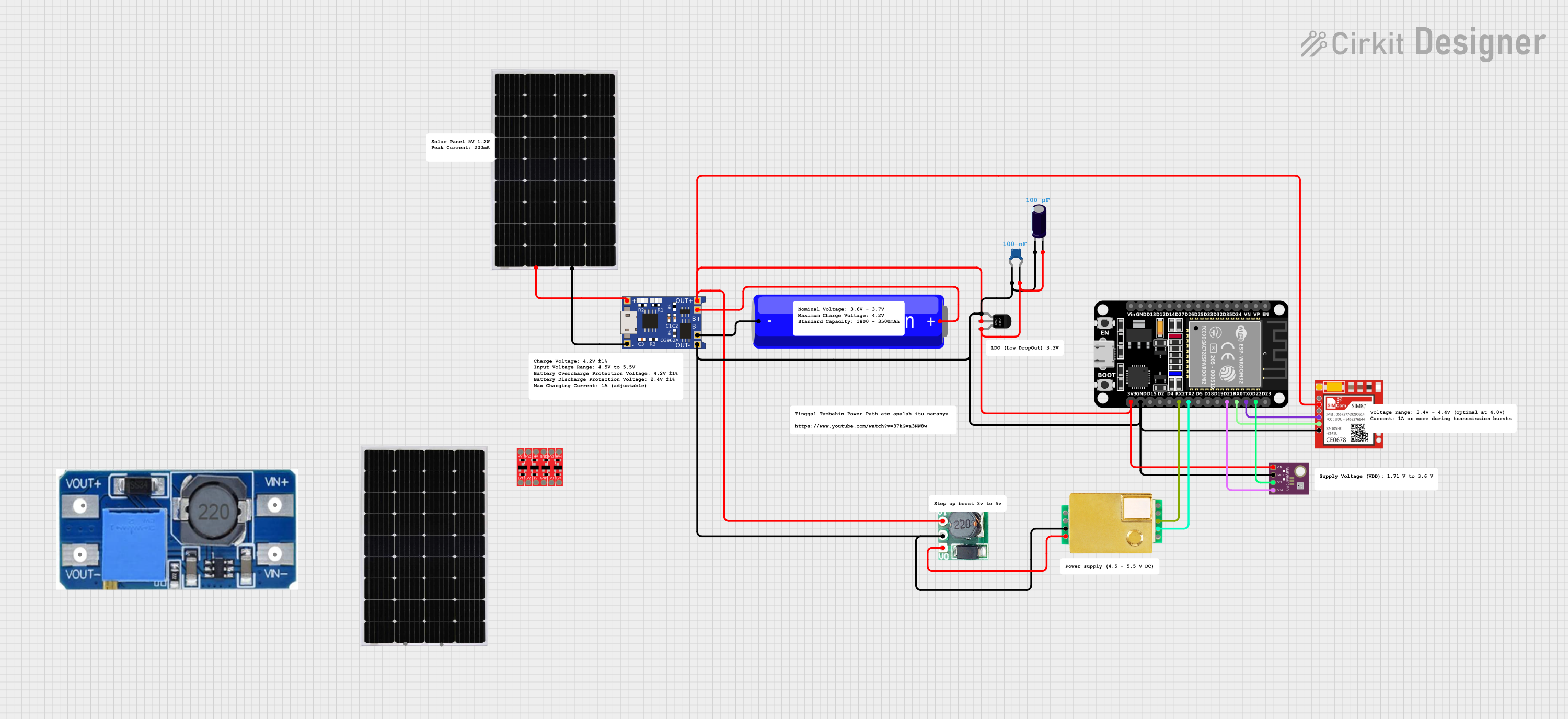
 Open Project in Cirkit Designer
Open Project in Cirkit DesignerExplore Projects Built with BD140

 Open Project in Cirkit Designer
Open Project in Cirkit Designer
 Open Project in Cirkit Designer
Open Project in Cirkit Designer
 Open Project in Cirkit Designer
Open Project in Cirkit Designer
 Open Project in Cirkit Designer
Open Project in Cirkit DesignerCommon Applications
- Audio amplification circuits
- Motor control and driver circuits
- Signal switching in electronic devices
- Voltage regulation and power management
- General-purpose medium-power applications
Technical Specifications
Key Specifications
| Parameter | Value |
|---|---|
| Manufacturer | STMicroelectronics |
| Part Number | BD140 |
| Transistor Type | PNP |
| Maximum Collector-Emitter Voltage (VCEO) | 60V |
| Maximum Collector Current (IC) | 1.5A |
| Maximum Power Dissipation (PD) | 12.5W (at Tcase = 25°C) |
| DC Current Gain (hFE) | 40 to 250 (depending on IC) |
| Transition Frequency (fT) | 190 MHz |
| Operating Temperature Range | -55°C to +150°C |
| Package Type | TO-126 |
Pin Configuration
The BD140 transistor comes in a TO-126 package with three pins. The pinout is as follows:
| Pin Number | Pin Name | Description |
|---|---|---|
| 1 | Base | Controls the transistor's operation |
| 2 | Collector | Current flows into this pin |
| 3 | Emitter | Current flows out of this pin |
The pin layout (viewed from the front of the flat side of the package) is shown below:
_______
| |
| |
|_______|
| | |
1 2 3
B C E
Usage Instructions
Using the BD140 in a Circuit
The BD140 is typically used in circuits where a PNP transistor is required for amplification or switching. Below are the steps to use the BD140 in a basic circuit:
Determine the Operating Region: Ensure the transistor operates in the desired region (cutoff, active, or saturation) by applying the appropriate base-emitter voltage (VBE).
- For switching applications, drive the base with sufficient current to fully saturate the transistor.
- For amplification, bias the transistor in the active region.
Base Resistor Selection: Use a resistor to limit the base current (IB). The value of the resistor can be calculated using Ohm's law: [ R_B = \frac{V_{in} - V_{BE}}{I_B} ] where Vin is the input voltage, VBE is typically 0.7V, and IB is the required base current.
Connect the Load: Place the load (e.g., motor, LED, or speaker) between the collector and the positive supply voltage (VCC).
Power Dissipation: Ensure the power dissipation (PD) does not exceed the maximum rating of 12.5W. Use a heatsink if necessary.
Example: Controlling an LED with Arduino UNO
The BD140 can be used to control high-current devices like LEDs with an Arduino UNO. Below is an example circuit and code:
Circuit Description
- The BD140's emitter is connected to the positive supply (VCC).
- The collector is connected to the LED and a current-limiting resistor.
- The base is connected to an Arduino digital pin through a base resistor.
Arduino Code
// Define the pin connected to the BD140 base
const int transistorBasePin = 9;
void setup() {
// Set the transistor base pin as an output
pinMode(transistorBasePin, OUTPUT);
}
void loop() {
// Turn the LED on by driving the transistor base high
digitalWrite(transistorBasePin, HIGH);
delay(1000); // Keep the LED on for 1 second
// Turn the LED off by driving the transistor base low
digitalWrite(transistorBasePin, LOW);
delay(1000); // Keep the LED off for 1 second
}
Important Considerations
- Base Current: Ensure the base current (IB) is sufficient to drive the desired collector current (IC). Use the formula: [ I_B = \frac{I_C}{h_{FE}} ] where hFE is the DC current gain.
- Heatsinking: For high-power applications, attach a heatsink to the BD140 to prevent overheating.
- Polarity: Double-check the polarity of the connections, as reversing the collector and emitter can damage the transistor.
Troubleshooting and FAQs
Common Issues
Transistor Not Switching Properly
- Cause: Insufficient base current.
- Solution: Check the base resistor value and ensure the base current is adequate.
Overheating
- Cause: Excessive power dissipation.
- Solution: Use a heatsink or reduce the load current.
No Output Signal
- Cause: Incorrect pin connections or damaged transistor.
- Solution: Verify the pin connections and replace the transistor if necessary.
Low Amplification
- Cause: Incorrect biasing or low hFE.
- Solution: Adjust the biasing circuit and ensure the transistor is operating in the active region.
FAQs
Q1: Can the BD140 be used for high-frequency applications?
A1: Yes, the BD140 has a transition frequency (fT) of 190 MHz, making it suitable for some high-frequency applications.
Q2: What is the maximum voltage the BD140 can handle?
A2: The BD140 can handle a maximum collector-emitter voltage (VCEO) of 60V.
Q3: Can the BD140 be used with an NPN transistor?
A3: Yes, the BD140 can be paired with an NPN transistor (e.g., BD139) in push-pull amplifier or complementary circuits.
Q4: How do I protect the BD140 from damage?
A4: Use a base resistor to limit the base current, and ensure the load does not exceed the maximum collector current (1.5A). Additionally, use a heatsink for high-power applications.